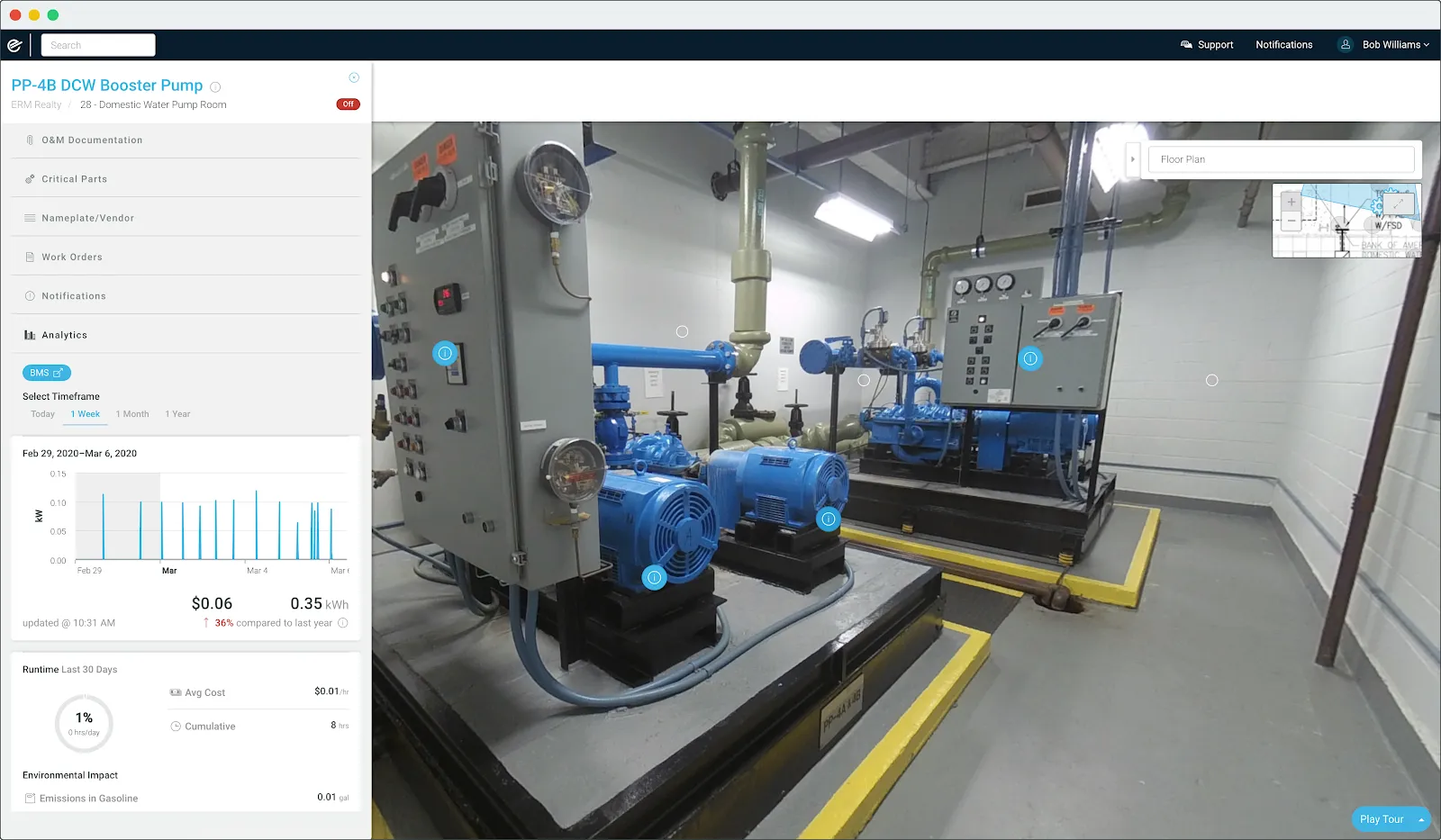What is Smart Building Technology?
Definition
Smart building technology broadly refers to software and hardware that work to make buildings “smarter,” meaning that operational processes are more automated, responsive to tenant needs and weather conditions, and generally more efficient.
Smart Building Components
IoT Sensors
IoT sensors are devices that capture data about physical objects and transmit it to the cloud, hence the “Internet of Things”. These devices can be placed on equipment or at the source of power. There are many types of sensors that come in different shapes and sizes used to monitor different outputs.
Analytics Software
A key smart building component is the software that translates the data collected by the sensors. Software continuously analyzes the rich data that sensors provide and helps to determine corrective actions for issues such as equipment degradation, inefficient schedules and poor maintenance practices..
User Interface
The user interface is how information is delivered to the end user, whether they are an on-site operator or an asset manager responsible for many buildings. Because sensors are collecting vast amounts of data, smart building technology companies have devoted a lot of resources to creating a user interface that is both easy to understand and actionable.
Connectivity
Sensors have to be connected to the internet for their data to be analyzed and utilized. Connectivity solutions include cellular and WiFi-based networking options. Cellular-based applications are a popular choice as they do not interfere with normal operations.
LoRaWAN is a wireless protocol for smart buildings that provides low power, long range connectivity. LoRaWAN allows wireless sensors to be deployed throughout a building while maintaining battery life and transmitting data through thick floors and walls.
Why it Matters
The built environment is depended on more than most people realize. Between work and home, Americans spend 90% of their days indoors.
Unlike manufacturing, which has a direct incentive to keep the equipment running smoothly (equipment downtime equals lost revenue), for commercial real estate properties like apartments, offices, warehouses, hotels and retail stores, equipment is often maintained through manual and reactive processes.
Smart building technology helps owners and operators of these buildings maximize their returns and deliver a better occupant experience.
One aspect of smart building technology is predictive maintenance, which improves productivity and helps reduce unexpected equipment downtime. Equipment monitoring sensors collect real-time data that predictive models use to identify trends and equipment faults before they occur. Predictive algorithms require huge amounts of data to identify subtle abnormalities and patterns that could not be found with human capabilities (Enertiv’s algorithms are powered by 10+ billion hours of equipment performance data).

- Digital Twin
A digital twin is a virtual model of a physical asset. The primary use case is to remotely monitor and manage systems previously only accessible in person. Examples of this include 3D models and photographs of the equipment that experienced engineers can use to remotely diagnose issues.
- Energy Efficiency
The pressure on building operators to reduce energy costs is increasing. By accessing actionable data from smart sensors and meters, building management systems provide efficiency through improvements in lighting and HVAC. For example, the sensor data used to perform conditions-based maintenance can ensure that the equipment is not wasting energy by running when the building is unoccupied or cooling when it’s already cold outside.


